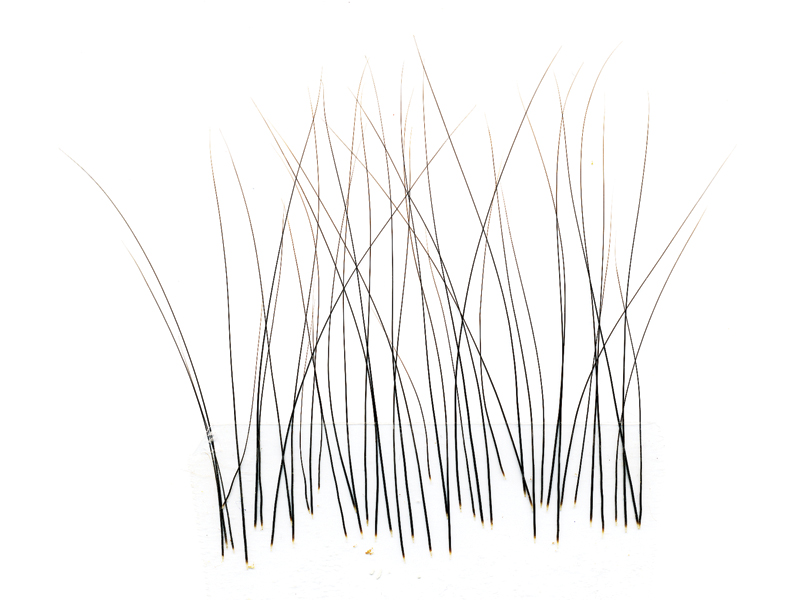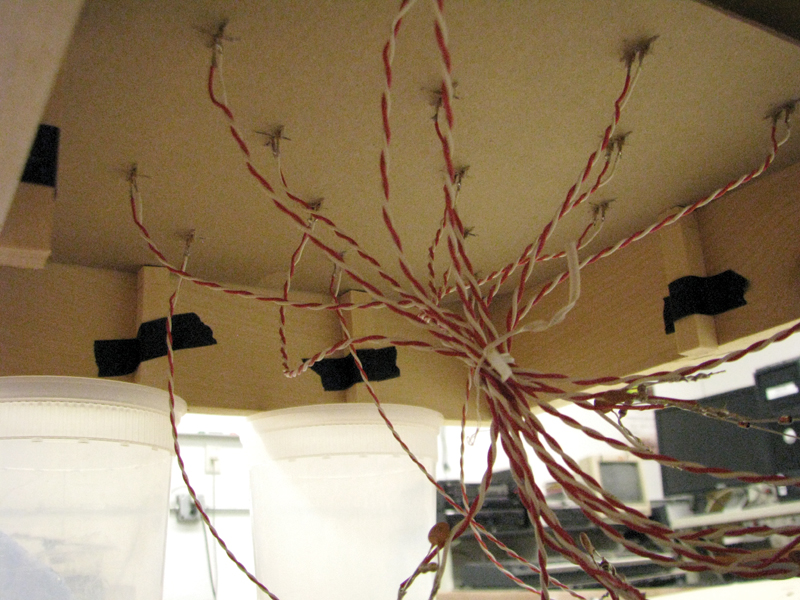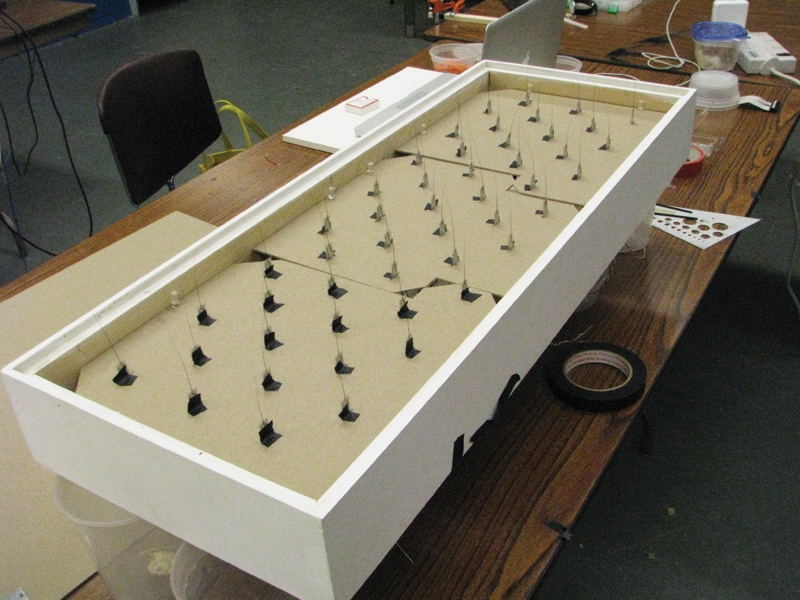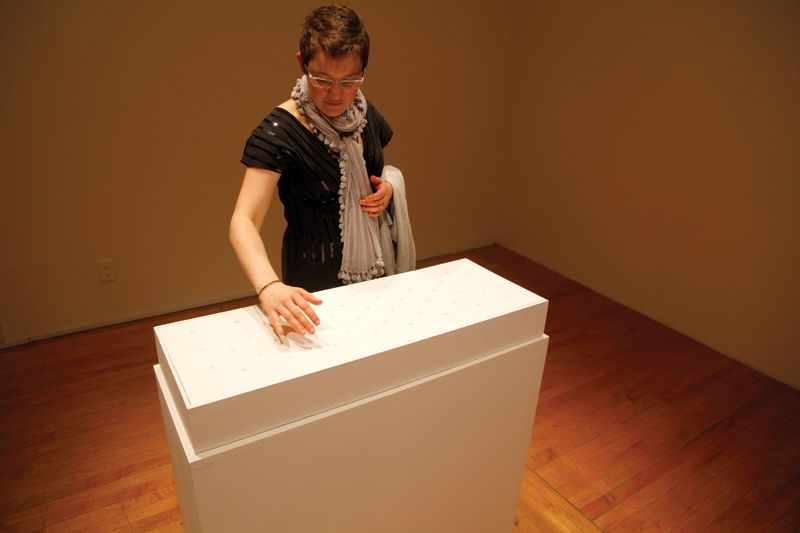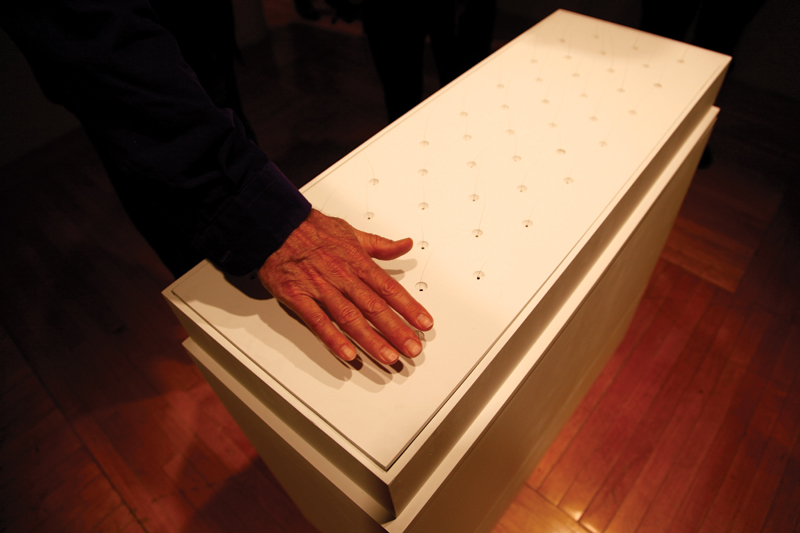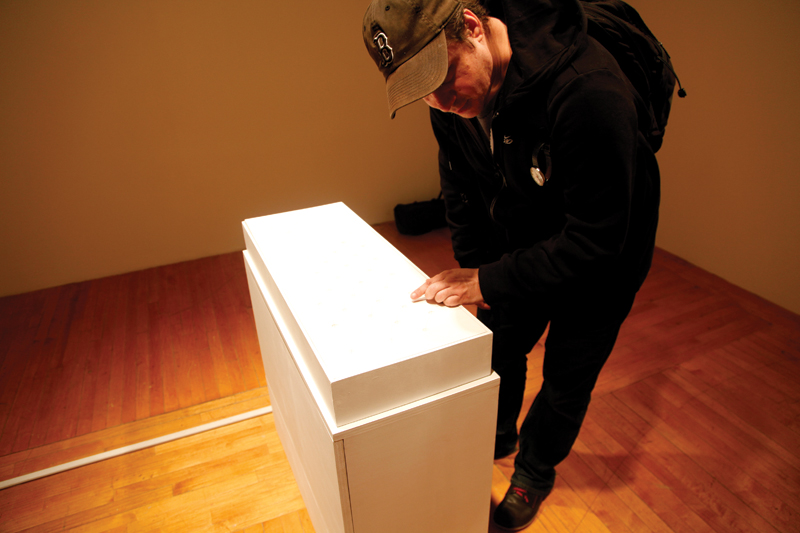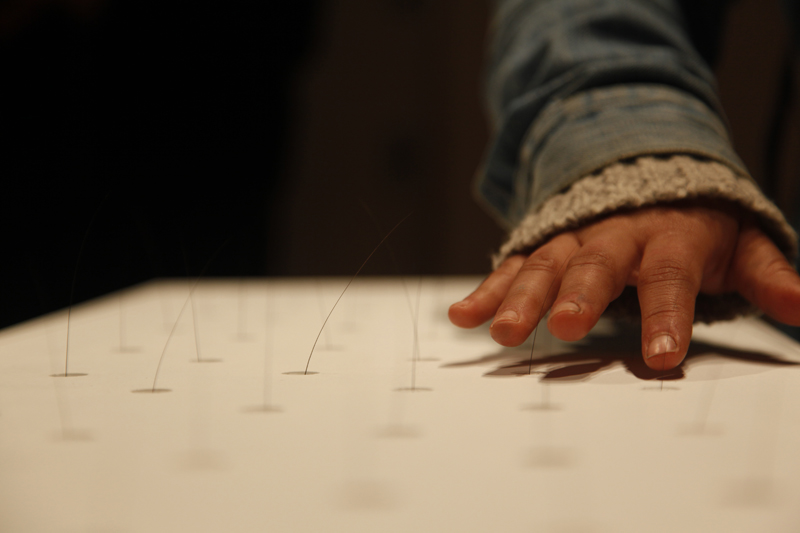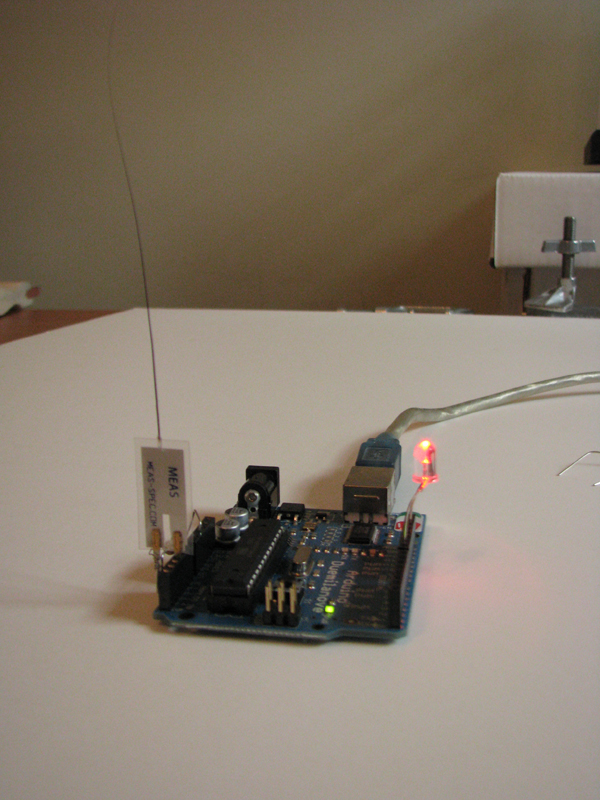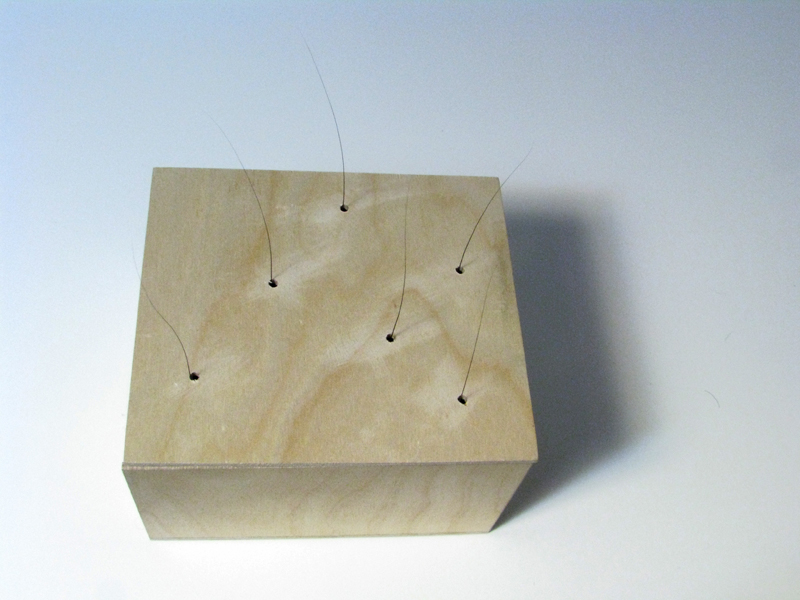Alison Kotin, MFA ’11
project
Whisker Organ is an interactive instrument linking the voices of a 30-person chorus with 48 black cat whiskers. Through touch, visitors to the piece activate the sound of massed voices singing, creating spontaneous, infinitely-variable musical compositions. Whisker Organ is built on a system of piezoelectric sensors connected to microprocessors, which control sound output to an external speaker system.
This piece is foremost a project about touch and context. The Whisker Organ apparatus and interface are designed to draw maximum attention to the smallest possible interaction: a fingertip brushes a cat’s whisker, triggering an explosion of sound. The staging of the piece in the gallery adds weight and gravitas to a user’s actions, elevating those who interact with the piece to the place of performers or conductors. In the same way that an organist can control massive sound from a room-sized instrument with a light finger-touch on a single key, the sound reaction to interaction with the whiskers will be oversized, startling, and emphatically out of proportion. Whisker Organ both requires and enables a leap of imagination to make sense of the joining of two organic but otherwise unconnected references.
I am interested in exploring the potential for new kinds of “instruments” that overlay normal physical space with a layer of sensitive technology accessible through touch and movement. A user does not need any special skill to play the Whisker Organ, but repeated interaction and practice are rewarded by a richer, more coherent sound, as the interface becomes familiar. In this way, users are rewarded for their natural curiosity. By creating works modeled on musical instruments and the behaviors of play, I want to set up situations that push participants to reflect on the meaning of what their action produce by highlighting the process of creation. I’m not a musician. Most likely someone else will come along who plays Whisker Organ more skillfully than I can. Most likely someone with even less musical expertise than I can claim will play Whisker Organ badly. I hope for both.
This project is a good example of the axiom that an artist should never throw away interesting materials. After four years of collecting shed whiskers from my two black cats, I have picked up nearly 100 whiskers of uniform color and size. I have always admired the minimalist beauty of these objects, which are pointed at one end like a porcupine’s quill, and at the other end taper away to near-invisibility.
A cat’s whiskers (vibrissae) are a measuring tool: they help her determine whether or not she will fit through a narrow opening. Whiskers are sensitive enough to pick up vibration from a breath of breeze, but are also remarkably strong and resilient. Although digital sensors generally provide a poor substitute for the sensitivity of analog touch, the combination of a cat’s whisker and a piezoelectric film sensor is surprisingly responsive. This makes sense from a metaphorical standpoint: when agitated, the piezoelectric film in Whisker Organ’s touch sensors produces a small electric charge, which is detected by an Arduino. In the same way, when a cat’s whisker detects an object or vibration, its movement triggers an electrical firing in her nerves, which communicate with the brain. The difference here is that technology has allowed me to take the cat’s responses out of context and apply a totally unrelated reaction (sound) to a familiar input (touch).
Out of context, jutting from a wall or tabletop, Whisker Organ’s whiskers lose their familiarity and become elegant and mysterious objects which are, like any body part separated from its owner, inescapably creepy to see and touch. This is my intention. I am not interested in making a piece about cats, but instead I want to explore the subtler emotions evoked by contact with organic objects that have been repurposed to transcend their original function. I hope to evoke in users both a frisson of physical discomfort, and a desire to prolong the interaction, and to experiment with the tools at hand.
Whisker Organ was created in collaboration with the Oriana Consort (Walter Chapin, Conductor) who performed the notes for the instrument’s database in March of 2011. The musical score (entitled Missa Brevissima or An Extremely Short Mass) that forms the basis of Whisker Organ’s sound output was composed by Chapin in the spring of 2011 specifically for the piece. We worked together to create an instrument that would be the only vessel capable of playing the music he composed, music that was structured by his authorial choice, but eventually endlessly variable based on users’ performative interactions. The notes I collected for Whisker Organ are made up of separate soprano, alto, tenor, and bass lines singing the “dona nobis pacem” of the Missa Brevissima note by note (with pauses between) in harmony and unison. Users may or may not make sense of the words as they stroke whiskers and hear the voices of the chorus come together, but at the highest level of musical organization, the Whisker Organ sings “give us peace.” The solemnity of the mass, and the meaning of the words, seem appropriate to me.
Extra thanks to Walter Chapin and the Oriana Consort, Jen Webb, Fred Wolflink, Tony Flackett, Alex Wang, Jésus Matheus, Colin Owens, and the Proximity Lab Fund.



